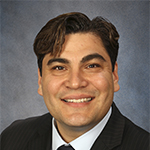Considerations for Financial Independence, Retire Early (FIRE) Wealth Planning
In 1992, financial thinkers, Vicki Robin and Joe Dominguez published Your Money or Your Life, a book offering a revolutionary view of retirement planning. In their book, Robin and Dominguez suggested workers may be able to retire far earlier than the traditional retirement age, or the mid-60s, if they pursued a rigorous regime of saving while in work and a careful budget in retirement.
The most eye-opening aspect of Robin and Dominguez’s proposal is the proposed savings rate required to reach such an early retirement goal. Whereas most American workers save between 5% and 15% of their income for retirement, the authors suggest that workers save and invest closer to 70% of their annual income!
With such a staggeringly high savings rate, some sound investments, and a well-controlled retirement budget, Robin and Dominguez suggest it is possible for a person to retire very young, potentially while still in their 30s. This approach to retirement has been dubbed “Financial Independence, Retire Early” planning, or the FIRE movement, for short. More than 30 years old, FIRE is once again becoming a popular financial topic.
What are the Three Factors of Retirement Planning?
FIRE’s proposal of radical savings and early retirement is grounded on sound financial mathematics. At its core, retirement planning is based on the interaction of three factors: assets dedicated to retirement, length of retirement, and retirement budget.
- Available Assets. Assets dedicated to retirement include retirement savings and any sources of cash flow a person has available to apply to his or her retirement spending. As an obvious point, the more assets a person has dedicated to retirement, the better his or her retirement is likely to work.
- Length of Retirement. The length of retirement is the period of time between when a person permanently leaves the workforce and when that person dies. Retirement is made longer both by retiring early and dying later in life. Generally, the longer a retirement lasts, the more difficult it is to sustain.
- Retirement Budget. The retirement budget is the recurring amount of money a person spends on an on-going basis during retirement. Typically, a retirement budget is maintained in large part by spending down retirement savings over time. The retirement budget is thus a direct function between assets dedicated to retirement and the length of retirement.
A person can improve or diminish prospects for retirement by altering any of these three factors. Increasing assets dedicated to retirement, delaying the start of retirement, or lowering the retirement budget will all improve the retirement outlook. Traditional wealth planning suggests that staying in work longer improves retirement prospects as it both shortens the length of retirement and increases the opportunity to save retirement funds.
FIRE, on the other hand, suggests drastically increasing retirement length, thus increasing the difficulty of maintaining retirement. To compensate for this difficulty, FIRE proposes radically increasing savings rate to increase assets dedicated to retirement and carefully control the retirement budget.
Is the FIRE Movement Right for You?
FIRE’s proposal is feasible, but it has three key limitations. First, radical retirement savings may not be an option for everyone. While FIRE may work for a young professional with lots of disposal income, it may be harder for a family with many children or high present expenses. Second, most of the standard ways people save for retirement, such as 401(k)s, 403(b)s, and IRAs, have built-in contribution limitations. If a person is going to radically save as FIRE suggests, he or she will have to branch out into alternative saving mechanisms, often with higher taxes or costs. Third, FIRE does not seem to have a good answer for long-term personal investments, such as education and career development. It is possible that a person can start working a job in his or her early 20s, save 70% of annual income, and be set for a modest retirement by 40. But, it is also possible that a person can enroll in law school or medical school in his or her early 20s, develop a sophisticated career, and have a much more robust retirement available by mid-50s. FIRE does not consider the pros and cons of each.
FIRE offers a valid view of retirement for some, but it is not for everyone. If you are interested in discussing retirement planning, whether by FIRE or a more traditional plan, please reach out to a First Bank Financial Advisor.
 |
Charles Claver is the Senior Vice President and Director of the Private Wealth Advisor team for First Bank Wealth Management. Possessing 25 years of experience in the financial services field, his expertise includes investment management, trust and retirement planning, individual/commercial insurance, and private banking/lending. You may reach him at (310) 887-0100 or via email at [email protected]. |

